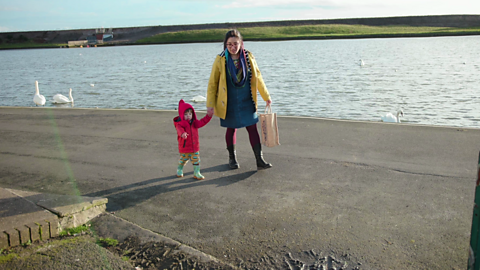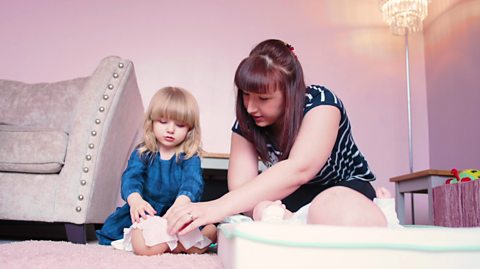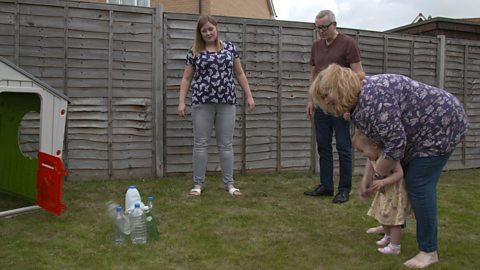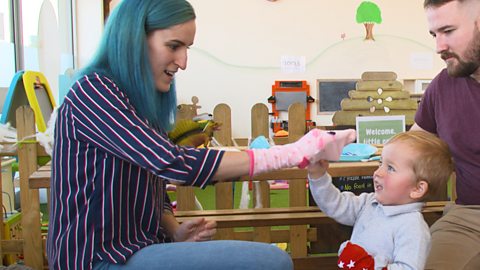Talking about sounds with your child is a great way to engage their senses and build their conversation skills.
You can go on a listening walk outdoors and see which sounds capture your child's interest.
Take a look at the video below to see why this is such a great way to incorporate play into your everyday routine.
What are the benefits of using sound words with your toddler?
- Using sound words gives your child a link between a word and a sensory experience.
- Linking words with the senses helps children build their understand of a word's meaning.
- Repeating sound words when out and about reinforces those words' meaning for little ones.
- Adding sound words into sentences helps your child build conversations.

What is onomatopoeia?
Onomatopoeia is a sound word which sounds like what it means when you say it out loud.
You might find that your child can pick up onomatopoeia more quickly than other words, because it engages more than one of their senses.
When your child experiences a word with more than one of their senses, their brain will create more connections to a word. Engaging with as many senses as possible gives them a much clearer memory link to that word.
Examples of onomatopoeia
Below are some examples that you can use when you're out and about with your little one:
| Splash | Squelch | Beep |
| Honk | Meow | Woof |
| Snap | Buzz | Chirp |

Top tips for chatting about sounds with your little one
You can point out sounds and chat about them at any point throughout the day with your little one. There are loads of opportunities to chat about sounds when you're out and about.
You can start talking about sounds before you even leave the house, for example when you zip up a jacket.
Ask your child what they can hear and let them describe the sound. You can try adding more words to what they say to show them how to build the words into sentences.
When you chat about what they can hear, you can put your hand up to your ear. Using simple gestures is another great way to build connections to words in a child's brain.
There's no limit to the sounds you can chat about. Follow your child's lead and see which sounds catch their attention the most.
Keep repeating these sound words whenever you're out and about with your little one. Repetition is really useful for language learning.
More sensory fun with toddlers
There are loads of ways to engage your toddler's senses and help them build up brain connections. Here are some of our favourites for 2-3 year olds:
- Try making a sensory table for your little one using a combination of differently textured household items, materials and foods.
- You can rip up different bits of paper together and describe the sounds you hear.
- Blowing bubbles is a fun activity that fascinates children.






